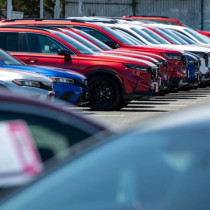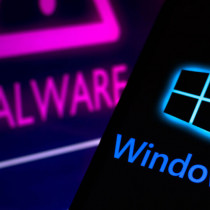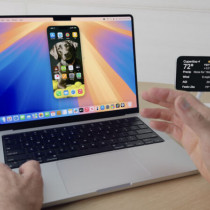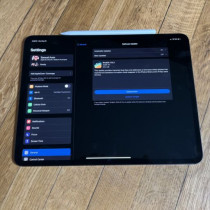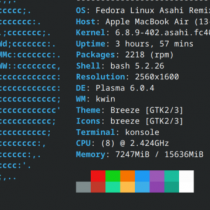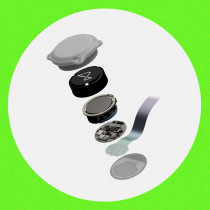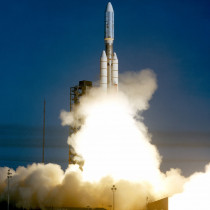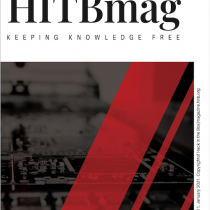Five Megapixel Cameras Arrive
Digital camera vendors are showing no sign of slowing the pace of increasing image resolution. Sony, Toshiba, Casio, and Olympus all introduced 4-megapixel digital cameras costing less than $1000 at or shortly before PC Expo last week, and Minolta introduced the first 5-plus-megapixel consumer model, the 5.24-megapixel Dimage 7, at the show. However, several digicam makers are trying to capture customers with less pricey models.
On the High End, Pixels are Paramount
Olympus was first to market in late 2000 with its 4-megapixel Camedia E-10, a highly sophisticated, SLR-type digital camera that cost just under $2,000--well beyond most consumers' budgets--and Olympus hasn't cut the price yet. The company's new 4.14-megapixel Camedia C-4040 costs about half as much, though it doesn't have nearly as many exotic features as the E-10. The $1099 C-4040 uses the same case as the company's C-3040, a 3.3-megapixel model; the new camera provides most of the same features of the earlier camera, including a 3X optical zoom and a wide f 1.8 lens aperture. It comes with a 16MB SmartMedia card; Olympus says the camera will be available in August.
Sony's new DSC-S85 also breaks the 4-megapixel barrier, and costs less: $800. The DSC-S85 incorporates a 4.1-megapixel charge coupled device (CCD), a Carl Zeiss 3X optical zoom lens, and a 16MB Memory Stick card for image storage. Sony's camera uses a 14-bit analog-to-digital (A/D) converter, which Sony says will help capture better detail in highlights and shadows; other vendors are still using 10- or 8-bit (A/D) converters . Sony also predicts an August ship date.
Casio's QV-4000 dials in 4.13 megapixels, a 3X optical zoom, and Casio's Best Shot feature, which allows you to set up a shot based on its resemblance to previously taken shots--for example, portraits or night shots. When it ships in September, it will include pre-recorded data for 100 different scene types (the camera holds 50 such scenes). Casio says the QV-4000 will cost "less than $1000," but hasn't set an exact price yet.
Toshiba also has become a player in the pixel-count race, with its 4.2-megapixel PDR-M81. This entry provides few of the exotic features that the other models boast, but Toshiba says it will beat the others to the shelf, with availability in July; it too will cost "less than $1,000."
In addition to the 5.24-megapixel CCD, Minolta's Dimage 7 features a 7X zoom, a 12-bit A/D converter, and a 16MB CompactFlash card. The camera's Flex Focus Point lets you pick which portion of the image you want it to focus on (rather than the more typical center-weighted focusing). Nikon and Casio offer similar features in their high-end cameras. When it ships in August, the Dimage 7 will carry a $1499 price tag. That's expensive compared to other high-end models, but it's $500 less than Olympus's E-10.
Five Megapixels and Beyond
While Minolta announced its 5-plus-megapixel camera first, other vendors won't be far behind. Most digital camera makers rely on CCDs manufactured by only a few third-party companies. Sony makes many of these CCDs, including ones for its own cameras; the 4-megapixel Olympus E-10 and Toshiba PDR-M81 use Sony CCDs. These outside vendors have often released cameras with Sony CCDs before Sony.
Mark Weir, Sony digital camera product manager, says the CCD isn't the lone factor determining when cameras appear. Some of the lag may be due to factors other than the supply of CCDs. "To get significantly above 4 megapixels, it will require cameras of larger form factors," says Weir. Most 3- and 4-megapixel cameras use half-inch-wide CCDs; the higher-resolution versions use smaller, more densely packed pixels. But manufacturers can only push pixel density so far. The CCD's physical size affects the camera case's dimensions only minimally, though--other factors, such as the relation of the lens to the CCD, play more important roles in determining the case size.
In addition, Michael Rubin, senior product manager for Nikon's consumer digital cameras, points out that the digital signal processors inside the cameras must become more powerful to handle the bigger files created by high-resolution CCDs, and the cameras will need larger buffers (temporary memory), more storage space, and better batteries.
But Weir says that while resolution is still most important to photo enthusiasts--the early adopters--the ability to print digital photographs drives it as well. "The need for resolution at 8-by-10 print size has not been fully met by the industry," he says.
The commonly accepted standard for high-quality printing is 300 dots per inch (dpi) and an 8-by-10 print size requires 2400 by 3000 pixels. Even a 5-megapixel camera only produces about 1900 by 2600 pixels, or roughly 260 dpi. "There's always room for more pixels," says Weir.
Jon Sienkiewicz, vice president of digital imaging products for Minolta, also predicts that resolutions will continue to climb, though at a slower pace, mostly due to a lack of need by consumers rather than daunting technical limitations. "3.3 [megapixels] is fine for most people," he says. Conveniently, Minolta also introduced a new 3.34-megapixel model, the Dimage 5, at PC Expo; it will cost $999 when it ships in August.
Casio's Krys Krawczyk, product manager of the company's Digital Imaging Division, sees a side effect of the new high-resolution models: "4.1 megapixels will kill 2 megapixels," he says. In other words, low-end cameras will gradually migrate to the 3-megapixel class.
The Low End: Resolution in Retro
However, other vendors see things a bit differently. "Who needs a 5.2-megapixel camera?" asks SiPix's Alexander Curyea. SiPix announced three new digital cameras at the show, none with a resolution over 1.3 megapixels (but none with a price tag over $299). The SP-1300 Shoot and Share features a 1.3-megapixel CCD, a 2X zoom, and 4MB of internal memory for $179, beginning in July. The SCP-1000 Digital Instant Camera combines a 0.3-megapixel CCD camera and a thermal-ink-transfer printer in one package; it will cost $299 when it ships in August. The $99 IQuest Roam, omits the printer but adds videoconferencing capability. It ships in July.
Curyea outlined SiPix's strategy: "We're a new company, going against well-established companies. As technology trickles down, we'll jump on it. We're about bang for the buck." The Nikons and Canons can invest great sums to engineer cutting-edge cameras, after which SiPix and companies like it will swoop in and offer less expensive models when the technology within them becomes commonplace.
Just as camera vendors can buy CCDs--or even their own lenses--from third-party manufacturers, they can also buy much of the electronic circuitry that goes between them off the shelf. Zoran Corporation, another exhibitor at PC Expo, showed a digital camera reference design that companies seeking to get into the business can use with minimal engineering on their part. The design specifies an inexpensive, 1.3-megapixel complementary metal oxide semiconductor (CMOS) image sensor instead of a CCD; Zoran says vendors can use the design to put a $179 digital camera on the market.
In the Middle, Consumers Count
Kodak's strategy falls somewhere in the middle of these two camps. "For our core consumer line, we'll never go over the $500 price point," says Nancy Carr, vice president of digital and applied imaging. Kodak makes professional digital cameras that incorporate 6-megapixel CCDs, but those cost several thousand dollars. "Up until this year, early adopters were driving the digital camera market," Carr says, but mainstream consumers are becoming more and more interested in going digital. "We're looking at the other 90 percent of the market." Just as professional photographers have migrated rapidly to digital cameras--mostly due to cost savings--consumers will follow them, though not as quickly. "As long as you can get film back in one hour," Carr says, people will continue to be satisfied by traditional film cameras.
To make the migration to digital easier for potential customers, Kodak says it's focusing on making cameras easier to use--hence the docking system it offers as an option on its DX3500 and its newest model, the DX3600, and the omission of the exotic features found on more expensive cameras. SiPix's Michael Weizer, director of product marketing, agrees that consumers want simpler operation, but went one further: "We need to get digital cameras away from being computer peripherals," he says.
Packing Them In
Whether or not consumers value ease of use over resolution is debatable, but look for digital cameras appearing in the next couple months to continue pushing the resolution envelope.




